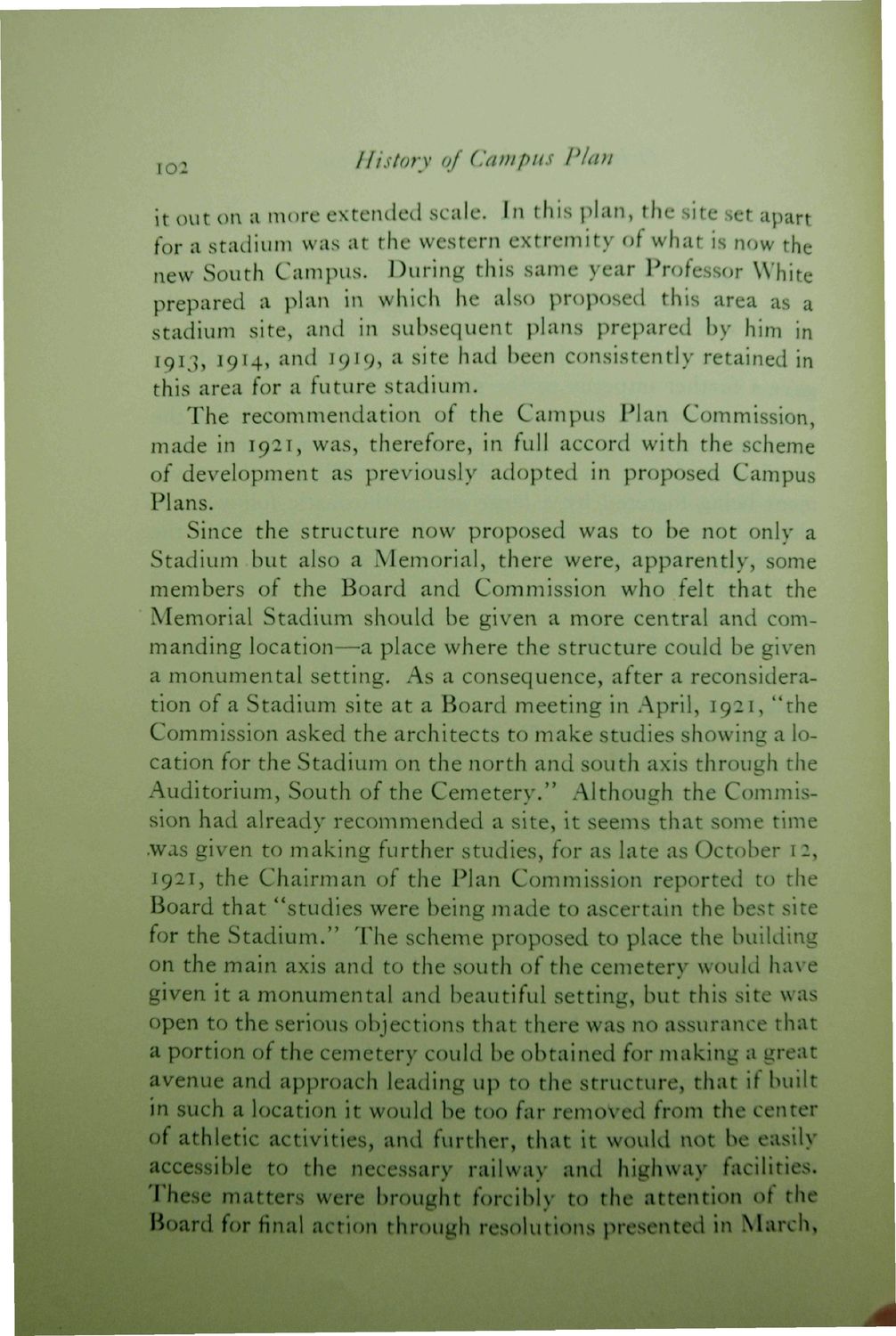| |
| |
Caption: Book - 30 Year Master Plan (Tilton & O'Donnell)
This is a reduced-resolution page image for fast online browsing.

EXTRACTED TEXT FROM PAGE:
IO2 History of Campus Plan it out on a more extended scale. In this plan, the site set apart for a stadium was at the western extremity of what is now the new South Campus. During this same year Professor White prepared a plan in which he also proposed this area as a stadium site, and in subsequent plans prepared by him in 1913, 1914, and 1919, a site had been consistently retained in this area for a future stadium. The recommendation of the Campus Plan Commission, made in 1921, was, therefore, in full accord with the scheme of development as previously adopted in proposed Campus Plans. Since the structure now proposed was to be not only a Stadium but also a Memorial, there were, apparently, some members of the Board and Commission who felt that the Memorial Stadium should be given a more central and commanding location—a place where the structure could be given a monumental setting. As a consequence, after a reconsideration of a Stadium site at a Board meeting in April, 1921, "the Commission asked the architects to make studies showing a location for the Stadium on the north and south axis through the Auditorium, South of the Cemetery." Although the Commission had already recommended a site, it seems that some time was given to making further studies, for as late as October 12, 1921, the Chairman of the Plan Commission reported to the Board that "studies were being made to ascertain the best site for the Stadium." The scheme proposed to place the building on the main axis and to the south of the cemetery would have given it a monumental and beautiful setting, but this site was open to the serious objections that there was no assurance that a portion of the cemetery could be obtained for making a great avenue and approach leading up to the structure, that if built in such a location it would be too far removed from the center of athletic activities, and further, that it would not be easily accessible to the necessary railway and highway facilities. These matters were brought forcibly to the attention of the Board for final action through resolutions presented in March,
| |